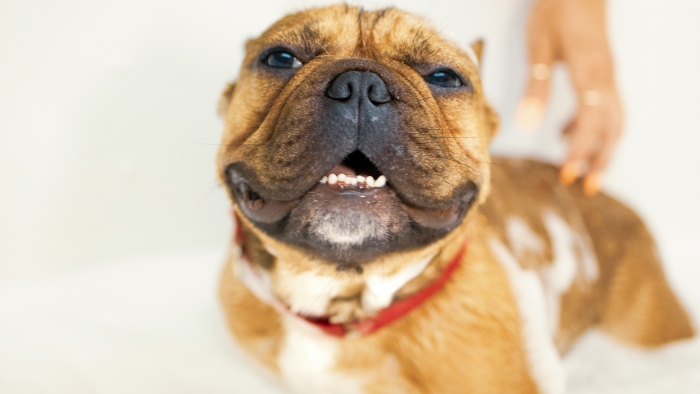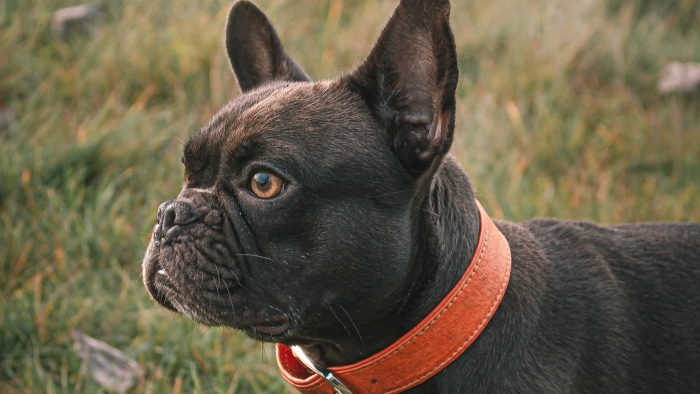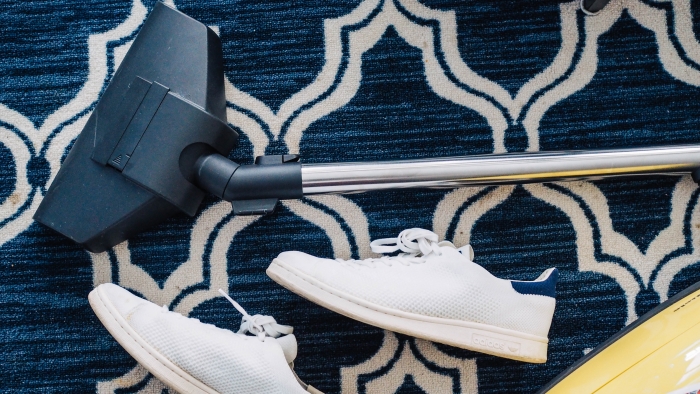How To Get Rid Of Fleas On Dogs:30 Ways

How to get rid of fleas on dogs is a challenge many pet owners face. Fleas can not only cause discomfort and irritation to your canine friend but also infest your home, laying eggs in your furnishings, carpets, and various nooks and crannies.
While we always recommend seeking advice from your veterinarian, if you prefer a natural approach, there are numerous effective methods to treat fleas on dogs without resorting to chemical treatments.
For those pondering how to eliminate fleas from dog hair, skin, inside your home, and even your garden, continue reading to uncover 30 top tips for addressing flea infestations at home using entirely natural ingredients.
Natural solutions for flea problems in dogs
When your dog starts scratching excessively, it’s often a sign of fleas. Fortunately, there are numerous home remedies available to help you combat this issue.
From DIY flea collars to homemade scrubs, dips, and combs, we offer a variety of methods to tackle fleas on dogs without resorting to chemical treatments.
Creating natural flea treatments
ESSENTIAL OILS FLEA SPRAY
Various essential oils serve as excellent natural flea remedies for dogs. Options like citronella, eucalyptus, peppermint, tea tree, and rosemary are known for their flea-repelling properties.
If your dog is comfortable with spray bottles, mix a few drops of your chosen essential oil with 300ml-400ml of water and gently spray onto your dog’s coat. It’s crucial to remember that certain essential oils, particularly tea tree oil, can be highly toxic to pets if not diluted correctly (0.1%-1%).
APPLE CIDER VINEGAR AND SALT FLEA SPRAY
Apple cider vinegar is an effective natural remedy to treat fleas on dogs by altering the pH levels of your dog’s skin, creating a less hospitable environment for fleas. Mix six cups of apple cider vinegar with four cups of water and a pinch of sea salt. Spray the solution directly onto your dog’s coat, being careful to avoid the eyes.
LEMON BATH
A lemon bath is an easy and natural method to keep your pet flea-free and smelling fresh. Combine half a cup of freshly squeezed lemon juice with two cups of water, and add a bit of your usual pet-friendly soap or shampoo. This mixture is a gentle yet effective way to treat fleas on dogs.
LATHER BATH
Using a pet-friendly shampoo that creates a good lather can also naturally eliminate existing fleas. Opt for an organic pet shampoo free from added chemicals for a natural approach.

Lather your dog thoroughly and leave the shampoo on for a few minutes to effectively kill fleas. This method is ideal for eradicating fleas before implementing preventative measures.
ROSEMARY DIP
For dogs that love water, a Rosemary dip can be both fun and an effective flea treatment. Boil fresh rosemary leaves in water, strain the mixture, and then dilute it in warm water. Once it’s at a comfortable temperature, pour it over your dog, allowing it to air dry naturally for a refreshing flea remedy.
MULTI-PURPOS NEEM OIL
Neem oil, a natural insect repellent, is an excellent yet underrated flea treatment. Sourced from Burma, Sri Lanka, and parts of India, neem oil can be applied directly to your dog’s coat, mixed into regular natural dog shampoo, or diluted to create a homemade flea spray.
ORGANIC SOAPS
Switching to organic soaps, such as peppermint or rose, for bathing your dog can naturally help with flea control. These organic soaps leave your dog flea-free and smell wonderful.
AROMATHERAPY SPRAY
For those familiar with aromatherapy, you can concoct a blend specifically for flea treatment and prevention. Use sweet almond oil as the base and add essential oils like Atlas cedar, lemon eucalyptus, geranium, bay laurel, common myrrh, and lavender. This spray not only combats fleas but also soothes your dog’s senses.
COCONUT OIL RUB
Coconut oil is a versatile remedy for combating fleas. Rubbing a teaspoon of coconut oil into your dog’s coat not only helps repel fleas but also adds shine and reduces odor. When ingested with food, it can combat intestinal parasites, thanks to its antibacterial, antifungal, and antiviral properties.
DIY flea collars for dogs
LAVENDER OR CEDAR OIL FLEA COLLAR
Creating a homemade flea collar is a brilliant and constant method of protecting your dog from fleas without the hassle of frequent applications. Start with a basic collar or bandanna.

Dilute a few drops of either lavender or cedar oil in water, and then apply this mixture directly to the collar or bandanna. This natural solution offers a hassle-free and pleasant-smelling flea deterrent.
VODKA FLEA COLLAR
Interestingly, vodka can serve as an effective flea repellent. Obtain a basic dog collar and soak it in a teaspoon of unflavored vodka, then allow it to dry.
For an added touch, infuse a few drops of your preferred essential oil to create a fragrant collar. This vodka-based collar is a great alternative for dogs who may be sensitive to the stronger scents of essential oils.
Natural flea control with combs and sachets
LEMON COMB
Lemon, known for its flea-repelling and killing properties, is completely safe for both dogs and humans. For a natural flea combing method, dip your dog’s regular comb or brush in fresh lemon juice and comb through their coat as usual. For short-haired breeds, using a cloth soaked in lemon juice will be just as effective.
FLEA COMB
A commercially available flea comb is an excellent choice for treating fleas, especially if you prefer not to make additional purchases. These combs, free from chemicals, are specifically designed to remove fleas and their eggs from your dog’s coat. This method is particularly useful for dogs already infested with fleas, as it helps remove existing fleas before implementing other natural flea remedies.
FLEA SACHET
For dogs adverse to sprays or direct application of products, a flea sachet is a simple and effective alternative. Create or purchase a small bag made of breathable fabric like hessian or muslin, and fill it with lemon peel, dried lavender buds, and cedar chips. Secure the top of the bag and place it near where your dog sleeps. The ingredients may lose effectiveness after about a month, at which point you can refill the sachet with fresh contents.
Dietary solutions for flea prevention
VINEGAR OR APPLE CIDER VINEGAR DRINK
A unique method to prevent fleas involves incorporating diluted vinegar or apple cider vinegar into your dog’s water. It’s important to test a small amount first to ensure your dog is comfortable with the taste, as it should not deter them from drinking water.
A suitable ratio is one teaspoon of vinegar to every four cups of water. This not only helps in keeping fleas at bay but also enhances your dog’s coat and skin health.
BREWER’S YEAST
An unconventional yet effective way to naturally treat fleas in dogs starts from within. Healthy dogs are generally less prone to flea infestations. One way to boost your dog’s health and simultaneously repel fleas is by adding a small amount of brewer’s yeast to their regular food. Mixing just half a teaspoon of brewer’s yeast into your dog’s meal can serve as an effective natural remedy against fleas.
When your dog brings fleas into the house, you’re faced with a larger issue: fleas in your living space. If you’re looking for effective ways to eliminate fleas from dog bedding and other areas your dog frequents, here are several methods for tackling fleas in your home.
MACHINE WASH
The first step in addressing an indoor flea problem is to launder all soft items your dog has contact with. This includes blankets, towels, beds, pillows, and mats. Washing these items is a major task but crucial in managing the flea infestation.
TUMBLE DRY
While washing is important, tumble drying your soft furnishings is even more effective. Just 15 minutes in a hot dryer will kill fleas at all stages of life, from eggs to adults.
VACUUM
Your vacuum cleaner will become your primary tool in fighting fleas at home. Water-based vacuum systems are ideal as they drown fleas upon collection.

For dry vacuums, be cautious when emptying the canister or bag, as live fleas can escape. It’s advisable to spray the canister with water upon opening to prevent this.
BAKING SODA
Sprinkle baking soda onto your carpets, then work it into the fibers with a broom, sweeping side to side. This process dehydrates fleas and their eggs. Leave the baking soda overnight, then vacuum it up, along with the fleas, in the morning.
SALT
Similar to the baking soda method, sprinkle salt on your carpets and soft furnishings, then vacuum the next day. Salt dehydrates and kills fleas and eggs but be cautious as it can rust your vacuum cleaner if not cleaned out properly.
LEMON SPRAY
For a non-vacuuming solution, try the lemon spray. Boil a thinly sliced lemon in water, let it cool overnight, then fill a spray bottle with the mixture. Lightly dampen your carpets and furnishings with the spray.
STEAM CLEAN
Steam cleaning your carpets and soft furnishings is another effective method, killing fleas on contact while freshening up your home.
DIATOMACEOUS EARTH
Diatomaceous earth, a fine powder made from algae, is an unusual but highly effective flea treatment. Sprinkle it on your carpet and leave it for 48 hours, keeping the area off-limits. Then, thoroughly vacuum the carpet. Diatomaceous earth dries out and kills flea eggs, preventing further infestation.
FLEA TRAP
To rid your home of fleas without spraying, create a flea trap with a plate or bowl of warm water mixed with dish soap. Leave this on the floor overnight; the mixture’s high viscosity traps fleas. Dispose of the mixture in the morning and clean the dish.
ROSEMARY PREVENTION
Using a pestle and mortar creates rosemary powder to prevent future infestations. Combine Rosemary with peppermint, wormwood, fennel, and rue, and sprinkle the powder around your home.
Natural flea control in the backyard
Despite being out of sight, fleas can infest your backyard, especially if your dog has fleas. These pests often lurk in the darker, moister areas of your yard. When addressing outdoor flea infestations, natural methods are preferable. Here are our top recommendations for managing fleas in your backyard naturally.
KEEP YOUR GARDEN BARE
Fleas are adept at hiding, so a less cluttered garden is less appealing to them. Trim or remove overgrown bushes and hedges, and maintain a weed-free garden. The fewer hiding spots available, the less likely it is for fleas to thrive in your yard.
BEWARE OF THE DAMP
Fleas favor damp, dark places and typically avoid sunlight. Inspect your garden from a flea’s perspective, considering where they might hide. Clear away twigs, dead leaves, and excess mulch from beneath bushes to allow more sunlight into these areas. Also, be cautious not to overwater your garden.
THE GOOD KIND OF WORMS
While worms in the garden might seem undesirable, certain nematodes, specifically Steinernema Carpocapsea, are beneficial. These microscopic worms consume fleas while being safe for both your dog and the garden.
FLEA REPELLING PLANTS
Planting flea-repelling flora is an excellent natural approach. Plants like spearmint, chrysanthemums, lavender, and Penny Royal naturally deter fleas.
Research which plants are suitable for your area’s climate and soil before visiting your local nursery. Adding these plants to your garden can create a natural barrier against fleas.
Regular Check-Ups and Preventive Measures for Flea Control on Dogs
In addition to the natural remedies mentioned, implementing regular check-ups and preventive measures is crucial in managing flea infestations in dogs.
These steps not only help in early detection but also prevent future outbreaks. Here are additional strategies to include in your flea control regimen:
Scheduled Veterinary Visits: Regular check-ups with your veterinarian are essential. They can offer professional advice, perform flea checks, and suggest preventive measures tailored to your dog’s needs.
- Use of Dog Harness During Walks: Incorporating a dog harness during walks can aid in flea prevention. A harness keeps your dog secure and reduces exposure to flea-infested areas, especially in parks or backyards.
- Grooming and Inspection Routines: Regularly grooming your dog with flea combs can help detect fleas early. Pay special attention to areas behind the ears, under the belly, and near the tail.
- Maintain a Clean Living Environment: Regularly clean and vacuum your home, especially areas where your dog spends a lot of time. Wash your dog’s bedding, toys, and accessories frequently to eliminate any flea eggs or larvae.
- Flea-Repellent Bedding: Consider using flea-repellent bedding for your dog. Some beds are treated with natural flea-repelling substances, offering an additional layer of protection.
- Monitor Outdoor Areas: Regularly check and maintain your backyard, garden, and other outdoor areas. Remove debris, trim grass, and use natural repellents to keep the area less inviting to fleas.
- Balanced Diet for Immune Support: A balanced diet strengthens your dog’s immune system. A healthy dog is less likely to be severely affected by flea infestations.
- Educate Family Members: Educate all family members about flea prevention. Ensure everyone knows the importance of maintaining cleanliness and avoiding areas known to have high flea populations.
Summing up
Understanding how to get rid of fleas on dogs requires a multifaceted approach that combines natural remedies with regular preventive measures.
By utilizing a variety of methods, from essential oil sprays and dietary adjustments to environmental control and regular grooming, you can effectively manage and eliminate flea infestations.
This holistic approach not only addresses current flea problems but also helps prevent future outbreaks, ensuring your dog remains comfortable and healthy.
Remember, while natural remedies are beneficial, regular veterinary check-ups and a clean living environment are equally crucial in maintaining your dog’s well-being and keeping fleas at bay.
FAQs
FAQ: Can I use regular table salt for the salt method mentioned in the flea control guide?
Yes, regular table salt can be used for the salt method to dehydrate and kill fleas. It’s fine-grained and works well to penetrate carpet fibers. However, it’s essential to thoroughly vacuum the treated areas afterward to prevent any potential damage to your vacuum cleaner.
FAQ: How often should I apply the essential oil spray to my dog for effective flea control?
The frequency of application for the essential oil flea spray depends on your dog’s activity level and exposure to flea-prone areas. Generally, applying the spray once a week is sufficient. However, if your dog frequently plays in areas with high flea populations, you may need to apply it more often.
FAQ: Are there any risks associated with using apple cider vinegar in my dog’s water for flea prevention?
While apple cider vinegar is generally safe for dogs, it’s important to start with a small amount to ensure your dog accepts the taste. Excessive amounts of vinegar in water can lead to digestive upset. Always maintain the recommended ratio and observe your dog’s reaction.
FAQ: Is it safe to use the lemon bath method for puppies?
Yes, the lemon bath method is safe for puppies. However, it’s important to ensure that the lemon juice is well diluted and to avoid getting the solution in the puppy’s eyes. As with any treatment, it’s advisable to perform a patch test first to check for any adverse reactions.
FAQ: How effective are DIY flea collars compared to commercial flea collars?
DIY flea collars using natural ingredients like essential oils or vodka can be effective for flea prevention, but their efficacy may vary compared to commercial flea collars. DIY collars are best suited for mild flea infestations or as a preventive measure. For severe infestations, consult your veterinarian for more potent solutions.

